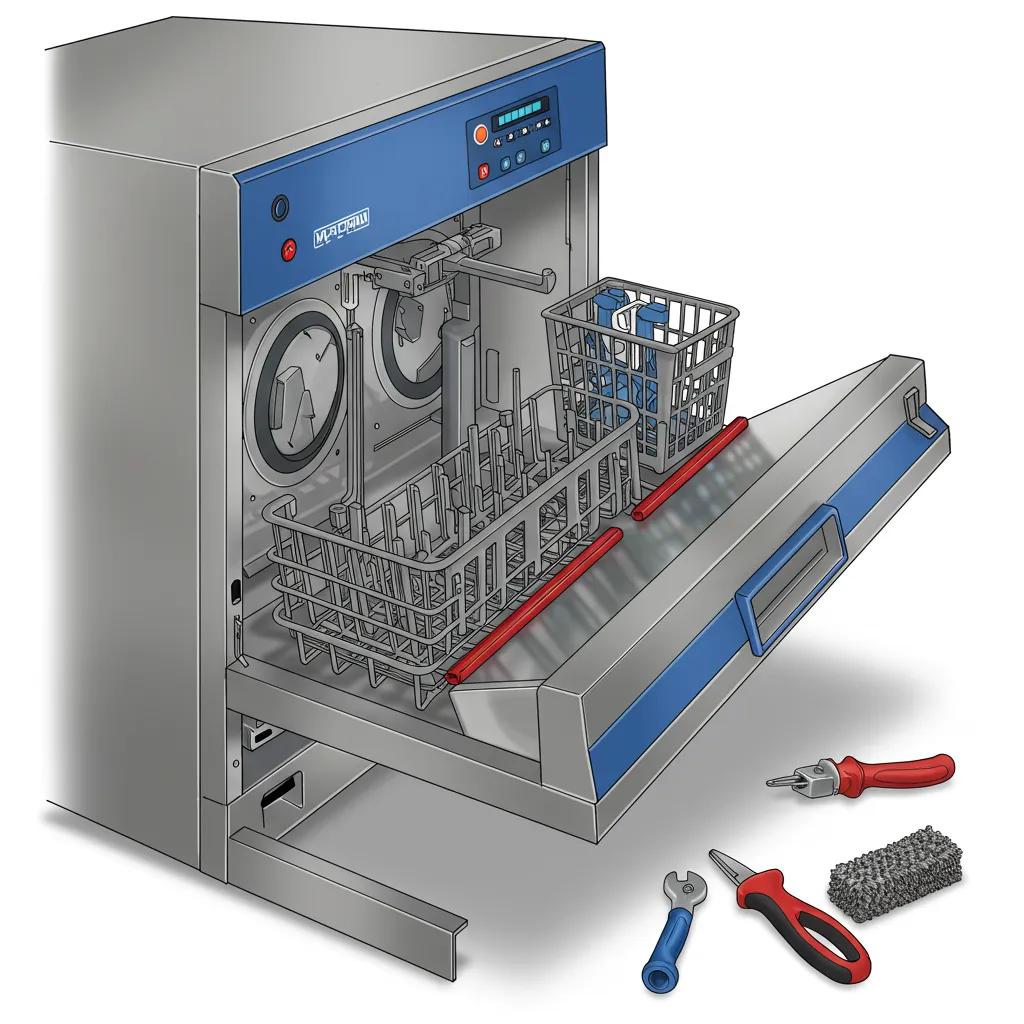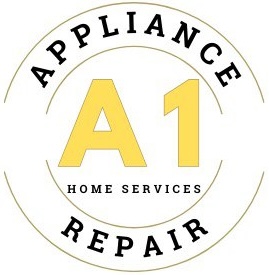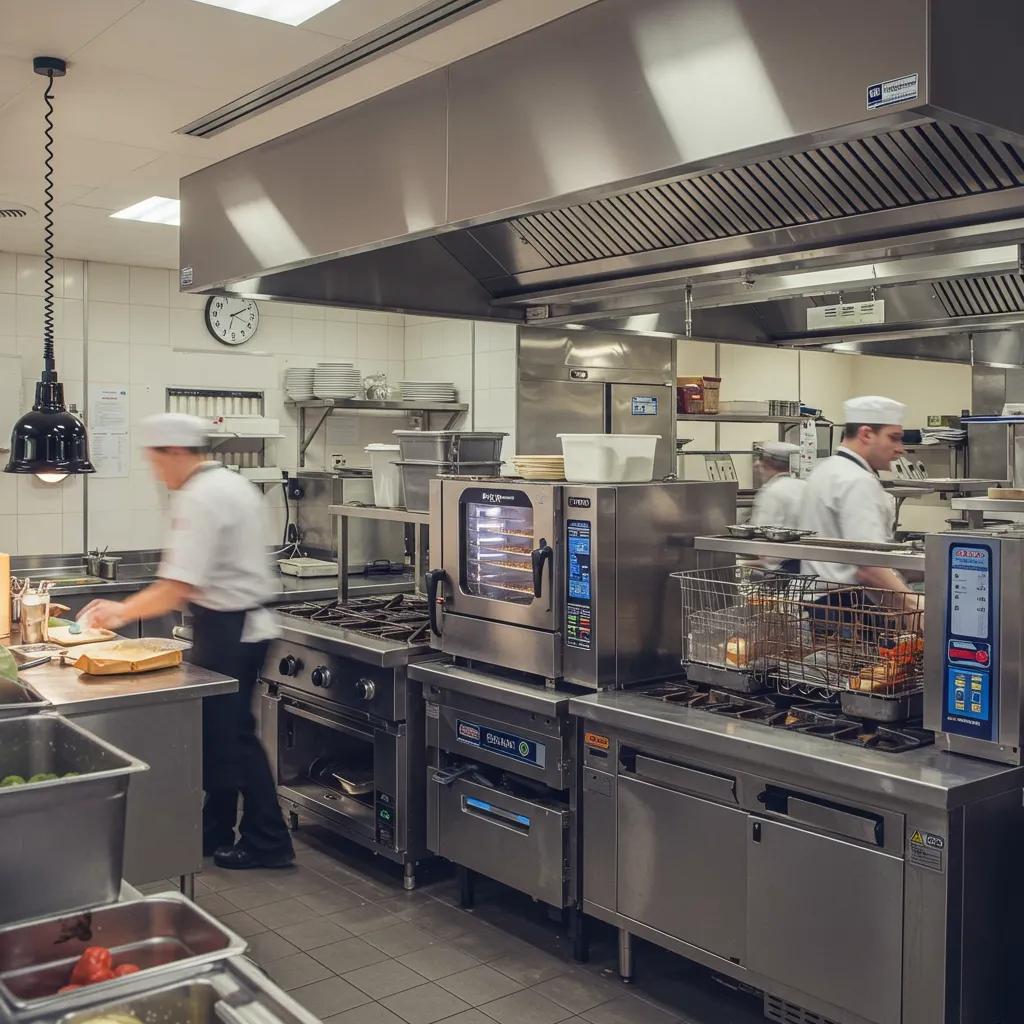Essential Restaurant Appliance Issues to Watch For: Key Problems and Solutions for Your Commercial Kitchen
Your commercial kitchen in Charlotte, NC relies on dependable appliances to maintain top-notch food safety and keep service flowing smoothly. When a crucial piece of equipment acts up—whether it’s a refrigerator losing its chill or an oven heating unevenly—it can bring your operations to a standstill and cost you thousands in lost business.
This guide is designed for restaurant owners and managers, walking you through the most common appliance problems in commercial kitchens, from refrigeration breakdowns to dishwasher malfunctions. We’ll provide practical troubleshooting tips and maintenance advice. You’ll learn how to spot issues like compressor failures, ignition problems, and drain blockages, plus understand the importance of regular maintenance checklists and service contracts. We’ll also share strategic insights on handling emergency repairs and the benefits of a quick response to minimize downtime and keep your equipment running at its best. Expert commercial appliance repair from A1 Appliance Repair s woven throughout, ensuring you have professional support when DIY steps aren’t enough. Ready to schedule service?
What Are the Most Common Commercial Refrigerator Problems in Restaurants?
Commercial refrigeration issues cover any malfunction that affects temperature control or the unit’s overall integrity. These problems often stem from mechanical wear, low refrigerant levels, or insufficient maintenance. For instance, a struggling compressor can lead to inconsistent temperatures, putting your food safety and inventory at risk. Here’s a quick look at the top refrigerator failures and how they impact your operations.
| Issue | Symptom | Impact |
|---|---|---|
| Compressor Malfunction | Loud cycling and insufficient cooling | Increased energy use and spoilage |
| Refrigerant Leak | Frost buildup and temperature swings | Health code violations |
| Worn Door Seals | Condensation and air infiltration | Higher utility bills and spoilage |
Regular checks and a proactive maintenance plan can help prevent these issues and guide you toward targeted repairs.
What Causes Commercial Refrigerator Compressor Failures?
Compressor failures happen when the motor, working hard to circulate refrigerant, overheats or its internal wiring shorts out. Constant use, dirty condenser coils, and low refrigerant levels all contribute to accelerated wear and eventual breakdown. Busy restaurant kitchens generate heat and grease that can clog coils, hindering heat exchange and forcing the compressor to work overtime. When a compressor fails, professional commercial appliance repair is crucial for replacement or rebuilding the unit to restore proper function. Understanding these root causes underscores the importance of routine condenser cleaning and refrigerant level checks.
How to Identify Refrigerant Leaks and Temperature Fluctuations?
Refrigerant leaks reduce cooling efficiency and cause unpredictable temperature swings, which can spoil your perishables. Start by inspecting lines and connections for any oily residue or ice patches, which are telltale signs of escaping refrigerant. Next, keep an eye on your internal temperature readings for any rapid deviations exceeding ±2 °F. If your checks reveal persistent fluctuations, it’s time to schedule service with A1 Appliance Repair. Catching these issues early can prevent more serious compressor damage and ensure consistent food safety and compliance.
When Should You Replace Faulty Door Seals and Clean Condenser Coils?
Worn door seals and clogged condenser coils gradually degrade your refrigerator’s performance. Replace door gaskets every six to twelve months if you notice visible cracks or constant condensation. In busy kitchens, clean condenser coils monthly to maintain efficient heat exchange and reduce the compressor’s workload. Sticking to this schedule optimizes cooling capacity and energy use, keeping your operations running smoothly and preparing you to tackle oven and cooking equipment issues.
How Do You Troubleshoot Common Restaurant Oven and Cooking Equipment Issues?
Troubleshooting commercial ovens and cooking appliances involves diagnosing ignition failures, uneven heating, and thermostat calibration errors. Addressing these promptly ensures consistent cooking results and prevents service interruptions. A systematic approach begins with checking power and gas supply, followed by burner inspection, temperature gauge verification, and internal element assessment. Here are the essential steps to identify and resolve typical cooking equipment malfunctions:
- Confirm that power and gas connections are secure and that voltage/gas pressure align with manufacturer specifications.
- Inspect burner ports and igniters for any blockages or signs of wear, cleaning or replacing components as necessary.
- Calibrate or test thermostats using a reference thermometer to ensure accurate temperature control.
- Examine heating elements for hot spots, corrosion, or breaks, using continuity testing for precise diagnostics.
- Document your findings and determine if professional intervention is needed for safety or complex repairs.
These steps guide your kitchen staff through basic checks while highlighting when to call A1 Appliance Repair for specialized service.
What Are the Signs of Oven Uneven Heating and Burner Ignition Failures?
Uneven heating in ovens typically shows up as food cooked inconsistently—edges might burn while the center remains undercooked. Burner ignition failures are evident as delayed sparks, intermittent flames, or no ignition at all. Listen for rapid clicking sounds without a flame, and watch for yellow or flickering flames, which signal a problem. Early detection allows you to clean igniter assemblies or replace faulty sensors before productivity is impacted, leading into how to address thermostat and overheating concerns.
How to Address Faulty Thermostats and Overheating in Commercial Ranges?
Faulty thermostats can misread temperatures, causing grill plates or ovens to overheat and trigger safety cutoffs. Overheating often results from shorted sensors or blocked air vents. Here’s a comparison of common components, their typical issues, and professional solutions:
| Component | Issue | Resolution |
|---|---|---|
| Thermostat Sensor | Incorrect temperature readings | Replace sensor and recalibrate control board |
| Cooling Fan | Reduced airflow and overheating | Clean fan blade and verify motor operation |
| Control Module | Erratic cycling and shutdowns | Diagnose circuit board faults and replace |
Addressing these issues improves cooking consistency and extends the service life of your equipment.
What Are Typical Problems with Commercial Dishwashers and How Can They Be Fixed?
Commercial dishwashers frequently encounter issues like clogged spray arms, pump failures, and gasket leaks, all of which compromise cleaning performance and hygiene. These malfunctions are often caused by hard water buildup, food debris, and worn seals. Here’s a breakdown of common dishwasher problems and their solutions:
| Problem | Cause | Fix |
|---|---|---|
| Clogged Spray Arms | Mineral deposits and food particles | Remove arms, soak in descaling solution, reattach |
| Drain Line Blockages | Grease buildup and debris | Clear line, flush with hot water and degreaser |
| Seal and Gasket Leaks | Wear and improper seating | Replace seals and ensure correct alignment |
Implementing regular cleaning and seal inspections can reduce service calls and naturally leads into detailed guidance on detecting clogs and leaks.
How to Detect and Resolve Clogged Spray Arms and Drain Line Blockages?
To find spray arm obstructions, remove the arm assembly and check for scale or food debris lodged in the nozzle holes. Clean with a non-abrasive brush and descaler before putting it back. For drain line blockages, watch for slow drainage, then disconnect the hose and flush it with hot water and a degreasing agent. If your DIY efforts don’t work or the blockage returns, call for professional commercial appliance repair to clear deeper obstructions and prevent pump damage.
What Causes Poor Cleaning Performance and Water Leaks in Restaurant Dishwashers?

Poor cleaning results often happen when detergent isn’t dispersed properly due to worn diverter seals or clogged detergent cups. Water leaks can occur from deteriorating door gaskets or failed pump seals. Inspect seals every quarter and replace them if they feel hardened or are torn. Check detergent cup springs and diverter function to ensure the correct cleaning solution is being distributed. Recognizing these factors helps maintain sanitation standards and prevents cross-contamination.
Why Is Preventative Maintenance Crucial for Restaurant Appliance Longevity?
Preventative maintenance proactively addresses wear and tear to extend equipment lifespan, lower energy consumption, and avoid costly downtime. Regular service intervals for cleaning, lubrication, calibration, and part replacement allow for early detection of potential issues. The table below outlines recommended maintenance frequencies and their operational benefits:
| Maintenance Type | Frequency | Benefit |
|---|---|---|
| Coil and Vent Cleaning | Monthly | Reduces compressor stress and energy load |
| Gasket Inspection | Quarterly | Ensures airtight seals and stable temps |
| Burner and Igniter Check | Bi-annual | Maintains consistent cooking performance |
This routine helps prevent unexpected failures and leads into the components of daily and monthly checklists.
What Should a Daily and Monthly Restaurant Equipment Maintenance Checklist Include?
A daily checklist should cover surface cleaning, temperature calibration checks, and gasket inspections to identify any visible damage. Monthly tasks should include cleaning coils, replacing filters, and lubricating moving parts. Consistently following these routines keeps your equipment performing optimally and reduces the need for emergency repairs, setting the stage for the advantages of a service contract.
How Do Service Contracts Benefit Commercial Kitchen Appliance Care?
Service contracts offer a bundled package of routine inspections, priority emergency response, and discounted parts under fixed-rate agreements. They help with accurate budgeting, encourage scheduled preventative maintenance, and ensure quick access to certified technicians. As a result, restaurants can maintain uninterrupted service, lower long-term repair costs, and gain peace of mind with comprehensive coverage.
When Should You Call for Emergency Commercial Appliance Repair Services?
Emergency repair is necessary when equipment failure puts food safety at risk, halts your service, or creates safety hazards. Key indicators include sudden shutdowns, smoke or electrical issues, and persistent temperature loss. Prompt professional response can prevent extended closures and naturally leads into common emergency scenarios.
What Are Common Emergency Scenarios in Restaurant Appliance Breakdowns?
- Complete refrigeration failure during peak service hours.
- Oven control board malfunction during preparation for large events.
- Dishwasher pump failure causing water to overflow.
- Grill ignition issues when the restaurant is busy.
Recognizing these situations ensures swift action and sets the stage for understanding the impact of response speed.
How Does Rapid Response Minimize Restaurant Downtime and Loss?
Quick repair turnaround keeps kitchens running and protects your revenue. The table below illustrates the impact of different response times:
| Response Time | Impact on Revenue |
|---|---|
| Under 2 Hours | Minimal service disruption |
| 2–6 Hours | Moderate order adjustments needed |
| Over 6 Hours | Significant revenue and reputation loss |
Timely expert intervention from A1 Appliance Repair safeguards customer satisfaction and preserves your restaurant’s profitability.
Experiencing any of these issues? Schedule professional assistance to keep your kitchen operating at full capacity with expert commercial appliance repair and maintenance.

